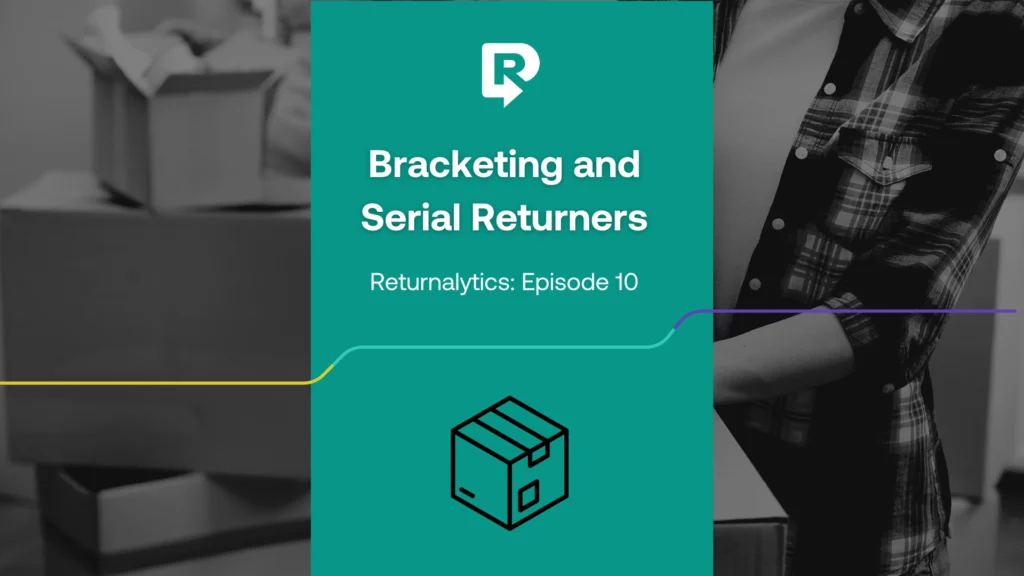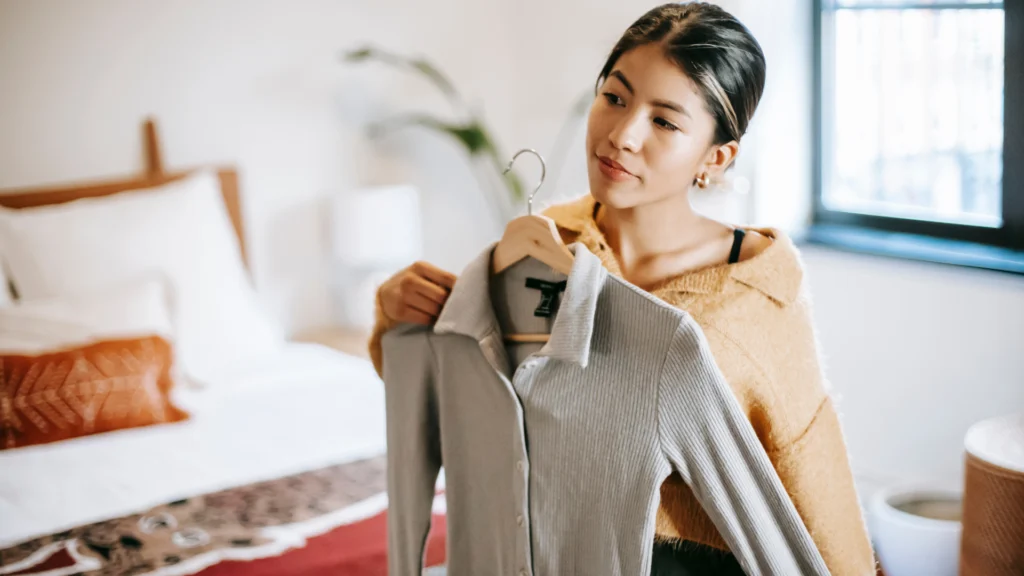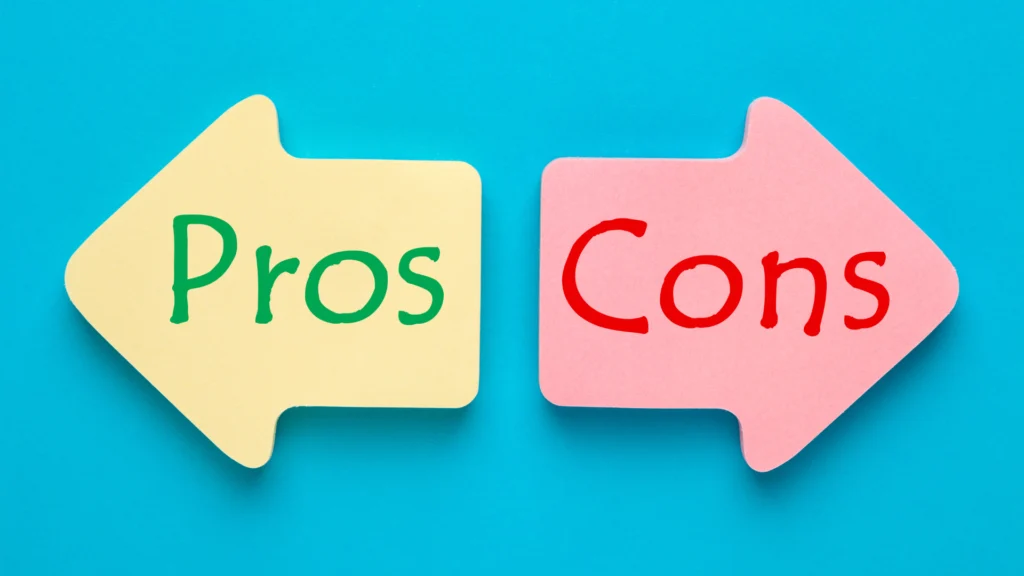Returnalytics: What is Bracketing and How Can You Manage Serial Returners?

About the Episode
The Returnalytics podcast discusses the latest retail trends, technology, and best practices for managing an ecommerce business and retail returns.
In this episode, we’re discussing what bracketing and serial returning look like and how you can manage serial returners.
The Rise of Braketing and Serial Returners
The pandemic brought on a lot of challenges. Not only for people but for businesses as well.
2020 changed how people shop. With more and more people turning to online shopping, finding the right size, fit, color, etc became a lot more challenging and retailers had to find creative ways to adapt. So they started offering things like free return shipping to everyone. This led to bracketing and other practices that may be convenient for shoppers but can negatively impact a retailer’s bottom line.
Because of this, 60% of larger companies are changing their return policies in 2023.
But don’t worry! We’ve got you covered. Listen in to learn how you can identify and manage serial returners. Enjoy!
Episode Transcription
Travis Farey – 0:00
Hi, I’m Travis Farey and this is the returns management podcast by ReturnLogic; a show where we connect ecommerce store owners together through casual discussion and examine current myths and trends to keep you up to date on everything happening in the ecommerce world.
Travis Farey – 0:33
So David, Lately, I’ve been hearing more and more about bracketing and serial returners. Why do you think that is?
David Gonzalez – 0:40
Well Travis, 2020 changed how people shop. With more and more people turning to online shopping, finding the right size, the right fit, and the right color, all that became a lot more challenging, and retailers had to find creative ways to adapt. So, they started offering things like free return shipping to everybody. And this led to a phenomenon called bracketing and even other practices that may be convenient for shoppers but can negatively impact a retailer’s bottom line.
Travis Farey – 1:09
Yeah, that makes a lot of sense. Come to think of it, I’ve seen a lot of companies cracking down on their return policies lately. But before we do anything else, let’s define what a serial returner is. So, David, who would you consider to be a serial returner?
David Gonzalez – 1:26
Percy Harvin.
Travis Farey – 1:27
Wow. You Vikings fans are something else. No David, not a Football returner, I’m talking about ecommerce returns!
David Gonzalez – 1:37
Oh yeah, I forgot fantasy football is over and now I have to get back to the real world. ANYWAYS a serial returner, at its most simple form, could just be a customer who returns what a company deems to be an excessive amount.
Travis Farey – 1:51
So, a serial returner would do something like order a bunch of different sizes, colors, or models of a product to just choose one or two and then send the rest back?
David Gonzalez – 2:01
Exactly. That’s a great example. However, there are multiple types of serial returners beyond just that example. (And beyond Percy Harvin)
Travis Farey – 2:11
Awesome. Let’s go ahead and touch on some of those.

David Gonzalez – 2:14
Alright, so what are the types of serial returners? The first type of serial returning is called wardrobing, or people who wear an item one time and return it.
Travis Farey – 2:26
Okay, so would an example of that be like when someone buys a product for an event, say a wedding, wears it to the event, and then returns it afterward?
David Gonzalez – 2:35
Exactly. The issue here is that the shopper never intended on keeping the product. Just to wear it once so they can post it on social media or wear it to that special event, whatever.
Travis Farey – 2:47
Wow yeah, that has to be frustrating for retailers… Especially with the high shipping prices and thin margins as we just talked about.
David Gonzalez – 2:55
Exactly. But what’s another type of serial returning?
Travis Farey – 2:59
Yeah, so I have a bit of a new one. I want to introduce a new type of Serial Returner that no one has really talked about yet but has popped up over the past few years.
David Gonzalez – 3:09
Okay you visionary, go ahead.
Travis Farey – 3:11
Okay, so I’m not going to name any names here but there are some shoppers who have realized they can take advantage of return policies over and over again to get discounts on their purchases. For example, some retailers offer discounts or store credit to promote exchanges. Well, if I’m a shopper, I’m going to do that over and over again because it’s saving me money and I don’t care about transportation fees, logistic costs, restocking fees, etc. All of those costs affect the retailer just so a shopper can get a 10% credit.
So, let’s call this type of shopper a ‘Swindler Returner’
David Gonzalez – 3:51
Yeah, I’m definitely guilty of that. And Travis you’ve been watching way too much Netflix, but I’ll take it. But can’t retailers catch on to that behavior and blacklist a customer who does that?
Travis Farey – 4:02
Yeah, I mean sure they could, but what if it’s a shopper who buys a ton of products from you? Then you just blocked a shopper with a high customer lifetime value from shopping with your brand and then they churn, and you lose of that money.
David Gonzalez – 4:16
That’s fair, okay, what else?
Travis Farey – 4:19
So, another type of serial returning behavior could be counterfeit product switches.
David Gonzalez – 4:24
What on earth is that?
Travis Farey – 4:26
You know it’s funny you ask that David. In this case the shopper may buy a counterfeit item for a fraction of the authentic item’s value, then purchase the real thing from an authorized seller and return the fake item to that seller for a full refund. So, for example, I could buy a Gucci belt, and then buy a counterfeit Gucci belt, send back the counterfeit to Gucci, and not only do I get to keep the real belt, but I also get a refund for the fake belt that I sent back.
David Gonzalez – 4:58
Interesting. So, if I went to Mexico and got a $20 pair of RayBans, I could essentially return those for a new pair? Interestingly, shoppers find all sorts of ways to surprise you. I actually haven’t heard of that one before. But that sounds like it would be a huge loss since that counterfeit product obviously isn’t able to be resold.
Travis Farey – 5:20
Yup. Exactly.
David Gonzalez – 5:22
Interesting. Another type of serial returning that we can mention is Cross-Retailer Returns. So, in this scenario, the customer takes an item that has either been stolen or purchased elsewhere for a lower price and initiates an in-store return, with no receipt and gets a refund to a gift card or cash.
Travis Farey – 5:43
Yeah, so kind of like that Harvard Case Study where someone returned a used tire to Nordstroms, and then they still accepted it because they wanted to have exceptional customer service but in reality, that’s a pretty bad business practice.
David Gonzalez – 5:58
Yes, correct.
Travis Farey – 5:59
Wow yeah, so you can really see why some retailers take this so seriously. So, David, are there any other types of serial returning behavior?
David Gonzalez – 6:09
Great Question. The last type is Tag Switching. Items that have plastic tags are most at risk for being fraudulently returned. Why? Because anybody can go grab a tag gun on Amazon for $5. They can tag their item, bring it back in the store, and get a new one, and it doesn’t even matter what condition it’s in because the tags are still on it.
Travis Farey – 6:33
Wow, and that’s a pretty cheap method. But my question is, where on earth did all of these serial returners come from?

David Gonzalez – 6:41
Great question. I would say the pandemic is the obvious answer there. Not only could shoppers physically not enter brick and motor stores due to government lockdowns, but they also just didn’t want to. The anxiety and nervousness of feeling like you were going to get sick is way too much to justify going to a store to drop something off.
Travis Farey – 7:01
Yeah, that is a great point. And actually, now that I am thinking about it, I totally forgot that at one point we were actually told not to leave our houses unless necessary. So, now you have a lot of bored adults who are usually at work or out shopping or finding other ways of entertainment, who are now just stuck in their homes with nothing to do.
David Gonzalez – 7:23
Exactly. We all needed those little dopamine hits from buying something new.
Travis Farey – 7:28
Yeah, that we did. And I imagine on top of that, you have companies like Amazon who have made free returns the standard option for shoppers.
David Gonzalez – 7:37
Right so now not only do you have a ton of people locked in their homes bored with nothing to do, but you also allow them to return items at no extra charge.
Travis Farey – 7:48
Okay, I see where you’re going with this now. So, some shoppers realized they could order all of the items and use their house basically as their own personal fitting room, and then just send back anything they didn’t like or that they didn’t want to purchase.
David Gonzalez – 8:03
Exactly. Just like when you go into a store, grab 5 or 6 items, try them on, and only end up buying one of them.
Travis Farey – 8:10
Exactly, that’s so true. But in this case, the retailer is paying for the shipping both to the customer and then back to their warehouse.
David Gonzalez – 8:19
And a huge percentage of those products that make it back aren’t even in good enough condition to be resold. I think it’s only like 10% of products get resold. So shipping is a huge source of the cost but so is all that liquidated product.
Travis Farey – 8:33
Right. And we also haven’t even mentioned the cost of Transportation and labor as well. So overall we can see that returns can get really pricey really fast.
David Gonzalez – 8:43
Exactly, and I can’t stress enough how returns can have a huge huge impact on a retailer’s bottom line.
Travis Farey – 8:50
I couldn’t agree more. So, it seems like at this point serial returners are a no-go. But are there any reasons why serial returners wouldn’t be bad for businesses? I guess what I’m asking is, what are the pros?

David Gonzalez – 9:06
Yeah, that’s a great question. So, it seems like there wouldn’t be any right? However, if 20% of your customers make up 80% of your sales, they’re bound to return items. Surprisingly, the shoppers who return the most items might be the ones who also purchased the most items.
Travis Farey – 9:25
Okay so what you’re saying is, it’s more likely for a loyal shopper to return multiple items vs say a first-time shopper?
David Gonzalez – 9:34
Of course, that’s not always the case but essentially yes. Sometimes it takes a bit to learn what size works when a shopper first gets introduced to a brand, but things like color or fit can always change with any new product release.
Travis Farey – 9:49
That is very true. So, if a retailer is to take a serious stance on serial returners, they need to make sure that those shoppers are showing signs of one of the serial returning types we mentioned before.
David Gonzalez – 10:03
Correct. If retailers start banning shoppers left and right who return items, there are going to be some serious consequences on their profits.
Travis Farey – 10:11
Okay, so, if that’s the case David, how can retailers manage serial returners?

David Gonzalez – 10:16
Great question. One of the ways retailers are cracking down is by scrutinizing their entire return policy to see if it’s actually profitable or if they’re operating at a loss and might not even know it.
Travis Farey – 10:29
That’s right David, and some of the largest brands on the planet realized that and have made some significant changes. And I imagine a lot more retailers will follow suit.
David Gonzalez – 10:40
Exactly. I was reading that 60% of larger companies are changing their return policies in 2023. Companies like REI, Zara, PacSun, Anthroplogie, etc. But the question is, why are they all changing their policies now? But let’s go through some specific examples first.
Kohl’s is no longer paying for return shipping costs. Bath and Body Works has now limited its previously wide-open return policy to 90 days and to $250 per customer over that period. LL Bean, Dillard’s, J. Crew, REI, Zara, they’re all now deducting a fee for returns made by mail. And lastly, H&M recently announced it is testing a return fee for online orders in some markets.
Travis Farey – 11:34
Those are some serious changes. And it’s interesting that it’s coming from big companies such as these who may have an easier time with returns affecting their bottom line. Versus just smaller companies who need to recoup the cost of returns in some way.
David Gonzalez – 11:51
Yeah. Couldn’t agree more.
Travis Farey – 11:52
So, besides cracking down on the entire customer base and return policy, what are some other ways that retailers can manage serial returners?
David Gonzalez – 12:01
Great question, there are a few things that come to mind. Obviously with some of the advancements in technology lately there are things like augmented reality so shoppers can have a ‘virtual fitting room’ so to speak. And that’s become a lot more popular and useful.
Travis Farey – 12:16
Yeah, and let’s not forget about using returns data to improve product description pages, turn down ad spend on underperforming products, and use returns data to just overall improve products.
David Gonzalez – 12:29
Of course, I mean that helps mitigate the need for shoppers to make a return to begin with.
Travis Farey – 12:34
Exactly.
David Gonzalez – 12:35
But one of the final tactics I’ll mention is segmenting shoppers.
Travis Farey – 12:40
Hmm, how do you mean?
David Gonzalez – 12:42
Well, you could basically give different shoppers different post-purchase workflows.
Travis Farey – 12:48
I’m still not sure I know what you mean.
David Gonzalez – 12:50
Well, for instance, I can offer free return shipping to my highest scoring customer lifetime value shoppers or, as another example, I could force a shopper to pay for return shipping costs if they’ve returned X amount of dollars in the past 6 months or something. That’s really the best solution for retailers. Segment shoppers based on customer lifetime value so that way they aren’t upsetting their most profitable customers yet.
Travis Farey – 13:18
Wow, is that possible yet?
David Gonzalez – 13:20
We’re very very close. Yeah
Travis Farey – 13:22
Okay, so if there is one take away from all of this, are serial returners good or bad for profits?

David Gonzalez– 13:29
At a high-level, serial returners, in general, are costly, which can be negative. But that’s not always the case. Not all serial returners are bad or negative for your business. Some might actually be the most profitable customers that a retailer has.
Travis Farey – 13:45
Right, so it really boils down to what a retailer deems as excessive. You’re right, more often than not, shoppers who buy the most are more likely to make a return over their lifetime with a retailer.
David Gonzalez – 13:58
So, retailers should be cautious on how they manage serial returners and instead of focusing on the shopper so much, they should review their policies and products first and make changes there to mitigate the number of serial returners in general. So, retailers need to be careful when determining who is a serial returner and what they are going to do about it, if anything.
Travis Farey – 14:21
Completely agree. So, the question boils down to, is it worth losing the customer as a whole, if they return “too much”? Going back to the example from earlier, if I have a customer who always returns their item to get 10% off. I need to determine if shipping, transportation, labor costs, etc… are worth banning that customer. If I calculate those costs and the cost of selling the item at a 10% discount and still make a profit, it may just be worth letting that customer continue their pattern.
David Gonzalez – 14:56
Exactly, the larger theme here is that retailers need to be focused on their shoppers, products, and policies, and whether or not they are truly profitable. If a retailer can’t answer if their policies are profitable, they’re just guessing, and guessing is ultimately what kills scalability.
Travis Farey – 15:17
Totally agree. Retailers should look at serial returners like bad drivers they’ll always be on the road, you just need to keep an eye out for them.
David Gonzalez– 15:28
Well said.
Travis Farey – 15:29
Well, that’s all we have for today folks. Thanks for joining, and we’ll see you guys on the next episode.
Thanks for listening. Catch another episode, learn more at returnlogic.com, and find us on YouTube and I’ll see you back here on the returns management podcast.
About the Speakers
Travis Farey
Travis is a Product Marketing Specialist at ReturnLogic. Travis graduated from Shippensburg University with a Bachelor of Science in Supply Chain Management & Marketing. Travis has been working for ReturnLogic for over 2 years and started out as a Customer Support Specialist before working his way into Product Marketing.
David Gonzalez
David is a Director of Growth Marketing at ReturnLogic, previously working as a Product Marketing Manager. David has prior startup experience formerly working at Drip and WhenIWork. He works closely with the Product, Sales, and Marketing teams at ReturnLogic to act as the voice of the customer and how to understand the ecommerce market.
Resources
- Serial Returners: What you need to know
- A Serial Returner Is a Marketer’s Best Friend
- Trying it on: retailers fight back against repeat returners
- Will cracking down on serial returners solve retailers’ return problem?
- Should stores crack down on ‘serial returners’?
- Retailers Are Cracking Down on Returns This Holiday Season
Ready to transform how your team manages returns?
Speak to a returns specialist to see if you’re a good fit!





